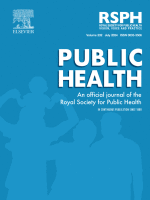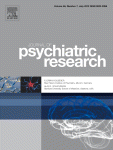Science About Mass Violence
NMVC PUBLISHED RESEARCH
MVI-IMPACTED COMMUNITIES
Data collection methodology for the six MVI-impacted communities
This cross-sectional survey was completed between February and September 2020 with a household probability sample of adults from 6 communities that had experienced an MVI between 2015 and 2019: Dayton, Ohio; El Paso, Texas; Parkland, Florida; Pittsburgh, Pennsylvania; San Bernardino, California; and Virginia Beach, Virginia. The surveys collected information on the mental health impact of community members following a MVI, including posttraumatic stress disorder, depression, social support, prior victimization, fear and protective behaviors, and service utilization. Address-based sampling was used to identify randomly selected households, mail invitations, and select 1 adult per household to complete a self-administered paper or online survey. Supplement 1 from the JAMA Network Open PTSD article below provides in depth description of sampling strategy, data collection methods, and assessments.

Posttraumatic Stress Disorder Among Adults in Communities With Mass Violence Incidents
Moreland, A. D., Rancher, C., Davies, F., Bottomley, J., Galea, S., Abba-Aji, M., Abdalla, S. M., Schmidt, M.G., Vena, J.E. & Kilpatrick, D. G. (2024). Posttraumatic stress disorder among adults in communities with mass violence incidents. JAMA Network Open, 7(7), e2423539-e2423539.
This study examines prevalence rates of PTSD and considers risk factors that may increase risk of future PTSD among the broader communities that experienced an MVI. Overall, adults living in communities that had experienced an MVI, there was a high prevalence of past-year (23.7%) and current (8.9%) PTSD. Being female, having a history of physical or sexual assault, and having a history of other potentially traumatic events were associated with the greatest risk of PTSD. These findings suggest that the outcomes of MVIs in communities extend beyond direct survivors and are exacerbated by exposure to prior traumatic events; thus, screening efforts for mental health services after MVIs should not focus exclusively on those directly exposed to MVIs.

Prevalence and risk factors of depression in U.S. adults post mass shootings: evidence from population-based surveys of multiple communities
Abba-Aji, M., Abdalla, S. M., Moreland, A., Rancher, C., Kilpatrick, D. G., & Galea, S. (2024). Prevalence and risk factors of depression in US adults post mass shootings: evidence from population-based surveys of multiple communities. Public health, 232, 93-99.
This study aimed to assess the prevalence and risk factors of depression within MVI-impacted communities. Overall, the MDE prevalence was 17·2% since the MVI, 15·4% in the past year, and 8·2% in the past month. Significant risk factors for MDE since MVIs include high exposure to the incident (adjusted relative risk [aRR] = 1·32, being aged 18–29 years (aRR = 2·52), being a woman (aRR = 1·58), having low social support (aRR = 1·80), and experiencing past sexual or physical trauma (aRR = 2·20). This study reveals a high burden of depression within communities affected by MVIs.

Awareness and use of support services following mass violence incidents
Rancher, C., Moreland, A. D., Galea, S., Bottomley, J., Abba-Aji, M., Abdalla, S. M., & Kilpatrick, D. G. (2024). Awareness and use of support services following mass violence incidents. Journal of Psychiatric Research, 180, 79-85.
Mass violence incidents (MVIs) result in significant psychological distress for survivors and the broader community. Support services (mental health services, support groups, religious support) can buffer negative effects of MVIs and facilitate recovery. This study looks at the awareness and use of support services after the MVI and explores predisposing, enabling, and need factors that may influence service use. Approximately 20% of participants reported they were aware of mental health services, 20% reported awareness of support groups, and 16% reported awareness of religious support. Younger participants with higher income (predisposing factors), high social support (enabling factor), and direct MVI exposure and psychological distress (need factors) were more likely to report awareness of support services. Of those aware of services, approximately 21% reported using support services. Those with direct MVI exposure and psychological distress were more likely to use each type of service. Otherwise, use of mental health services, support groups, and religious support varied across predisposing factors (race, age, income). Overall, findings suggest there is limited awareness of support services post-MVI, despite the well-documented mental health burden after these incidents. This suggests the need for improved communication about available services after MVIs.
DIRECT VICTIM SURVEYS
The data were collected from a list of individuals who were eligible for, or received, services at resiliency centers for victims and survivors of the Route 91 Harvest music festival shooting in Las Vegas. The surveys collected information on the mental health impact of direct victims following a MVI, including posttraumatic stress disorder, depression, social support, prior victimization, fear and protective behaviors, and service utilization. More surveys are being collected from other MVIs.

Prevalence and Risk Factors of Depression and Posttraumatic Stress Disorder After a Mass Shooting
Abba-Aji, M., Moreland, A., Abdalla, S. M., Rancher, C., Galea, S., & Kilpatrick, D. G. (2024). Prevalence and risk factors of depression and posttraumatic stress disorder after a mass shooting. JAMA network open, 7(3), e242739-e242739.
This study examines the prevalence and risk factors of major depressive episode (MDE) and PTSD among MVI victims and survivors four years post-incident. Surveys from 177 witnesses and survivors of the Las Vegas Route 91 MVI (October 1, 2017) were collected in 2021. High rates of past-year MDE (49.2%) and past-year PTSD (63.3%) were reported. Those physically injured during the MVI had a 36% higher risk of past-year MDE and 32% higher risk of past-year PTSD. Higher levels of social support was associated with reduced the risk of both past-year MDE and PTSD. This study found that witnesses and survivors of the Las Vegas MVI continued to have substantial mental health challenges even 4 years later, emphasizing the need for sustained mental health support. Communities affected by MVIs should consider implementing long-term support strategies, including ongoing counseling and trauma-informed services.
